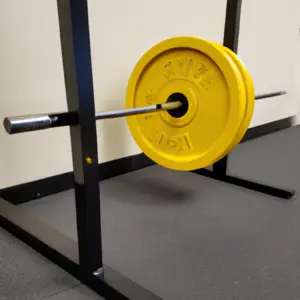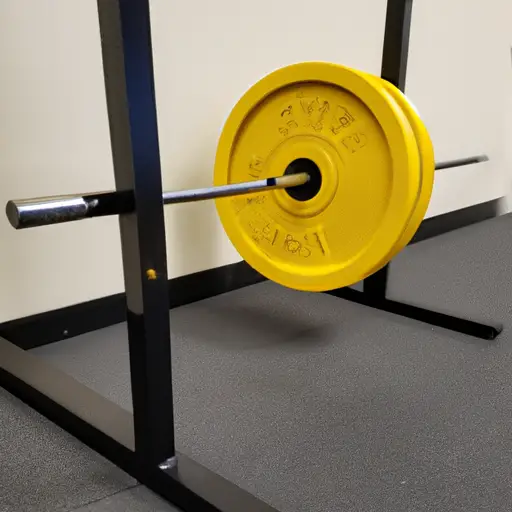Powerlifting for Beginners What You Need to Know
Hey there, it’s time to pump some iron!
Powerlifting is a great way to get strong and feel confident. If you’re not familiar with it, powerlifting consists of three main exercises: the squat, the bench press, and the deadlift. Each movement tests different aspects of your strength, and when done regularly, can lead to impressive gains in muscle mass and overall fitness.
Nowadays, many people are interested in powerlifting, and for good reason. Benefits include increased bone density, improved cardiovascular health, and greater self-esteem. Plus, it’s just plain fun!
If you’re new to powerlifting, don’t worry. It can seem intimidating at first, but with some proper guidance, it’s an activity that’s accessible to anyone.
In this article, I’ll cover some of the basic terminology and techniques of powerlifting. Additionally, I’ll share some strategies to help you increase your strength level safely and effectively.

Are you ready to get started? Then let’s go!
(Check out this beginner’s guide to powerlifting for more tips: lovelylifeofleah.com/getting-started-with-powerlifting-a-beginners-guide)
Getting Familiar with the Basics
So, you’ve decided to get into powerlifting, huh? Great choice! Before you start loading up the bar, let’s go over some of the basics you need to know.
Types of Powerlifting Exercises
The three main lifts in powerlifting are the squat, bench press and deadlift. These exercises target different muscles, and form the basis of competition for powerlifters. It’s important to learn the proper technique for each lift, as poor form can lead to injury and also negatively impact your performance.
Technique and Form Tips
When performing these exercises, it’s important to engage the right muscles and maintain proper posture. This means keeping your back straight, your head aligned with your spine, and your feet planted firmly on the ground. Breathing is also crucial, as inhaling and exhaling at the right time can help you lift heavier weights.
Strategies for Increasing Strength
As you train, you’ll want to gradually increase the weight you’re lifting in order to build strength. There are a variety of programs you can follow to achieve this, such as the popular 5×5 program or the Westside Barbell method. In addition, proper nutrition is essential for powering your workouts and aiding in muscle recovery. Eat a diet rich in protein and carbs to fuel your lifts and help your muscles repair and grow.
Safety Considerations
Powerlifting can be a risky sport, so it’s important to take proper precautions. Invest in quality equipment such as lifting belts, wrist wraps, and shoes with good grip. Warm up before each workout to prepare your muscles, and be mindful of any pain or discomfort during your lifts, which could indicate an injury. Remember, it’s better to take a break and recover than to push through and risk serious harm.
Now that you have a solid foundation in the basics of powerlifting, it’s time to hit the gym and start lifting heavy! Just remember to take things slow, listen to your body, and enjoy the process of getting stronger.
Get Stronger: Strategies to Help You Improve Your Powerlifting
You may be wondering how you can get stronger and improve your powerlifting skills. Well, I’ve got some tips for you that have worked for me!
Train Hard and Smart
I strongly recommend following a structured training program. One option is a periodization approach, where you increase intensity gradually over time before taking a deload week to recover. Consider working with a coach who can help tailor the program to your goals and abilities. In addition to the gym, incorporating accessory exercises outside of powerlifting movements can help strengthen weaker muscles and improve overall body composition.
Nutrition Is Key
Not only do you need to fuel your body for the demands of training, but you also need to support muscle growth and recovery. Aim to consume a balance of macronutrients, including enough protein to promote muscle synthesis.
Stay Accountable and Consistent
Consistency is key to any fitness goal. Plan training sessions in advance and track progress to ensure you’re making strides towards increased strength. And don’t forget to celebrate milestones along the way.
Remember, getting stronger is a process that takes time, effort, and discipline. With the right mindset and strategies in place, you can continue to progress and achieve your powerlifting goals!
Watch Out for These Safety Factors!
When it comes to powerlifting, safety should always be a top priority. As someone who’s been in the powerlifting game for a while now, I’ve learned the hard way the importance of paying attention to certain safety factors. Here are some key things to keep in mind:
Equipment
First things first, you need to make sure you have the right equipment. This includes everything from weightlifting shoes to support belts to compression sleeves. Not only will the right equipment help you lift better, it can also help protect you from injury. That being said, I’ve seen some folks get a little carried away with buying gear. Remember: you only need what you need! Don’t go overboard and buy every accessory you come across.
Injury Prevention
Speaking of injury, that’s another area of safety you’ll want to focus on. There are a few key things you can do to help prevent injury while powerlifting. First, make sure you’re using proper form and technique on every lift. This is where having a coach or trainer can be incredibly helpful. Additionally, make sure you’re not going too heavy too soon. Progression is important, but it’s even more important to ensure you’re not putting your body at risk. Finally, don’t neglect rest and recovery. Your muscles need time to repair themselves, so make sure you’re taking adequate breaks between workouts.
Common Training Mistakes to Avoid
Finally, there are a few common training mistakes that can be quite dangerous if not addressed. One is neglecting to warm up properly. I know it can be tempting to just jump into your workout, but you need to take the time to get your muscles and joints ready for the work ahead. Another common mistake is not paying attention to your body’s signals. If you’re experiencing pain or discomfort, it’s important to listen to your body and address the issue rather than just powering through. Finally, don’t forget to cool down properly too. Stretching and foam rolling can help prevent soreness and injury.
By keeping these safety factors in mind, you’ll be well on your way to powering up safely!
The Wrap-Up: So, What Have We Learned Here Today?
Well folks, by now you should have a pretty good idea of what powerlifting is and how to get started with it. Remember, powerlifting can be an incredibly rewarding and empowering sport, but it’s important to start slow and work your way up to heavier weights. Don’t be discouraged if you can’t lift as much as you’d like at first – progress takes time.
As we’ve discussed, there are a variety of strategies you can use to increase your strength, from following specific training programs to fueling your body with the right types of foods. Just keep in mind that everyone’s fitness journey is different, so what works for one person might not work for you.
Safety considerations are also crucial in powerlifting. Making sure you have the right equipment and engaging in injury prevention techniques can help keep you safe and healthy during your workouts.
So, what’s next? If you’re feeling motivated and ready to take on the challenge of powerlifting, the most important thing is to just start. Grab a coach or experienced lifter to guide you through the process, and get to work on building your strength and technique.
And most importantly, don’t forget to have fun! Powerlifting can be a great way to challenge yourself and push your limits, but remember to listen to your body, take breaks when you need them, and celebrate your progress along the way.






